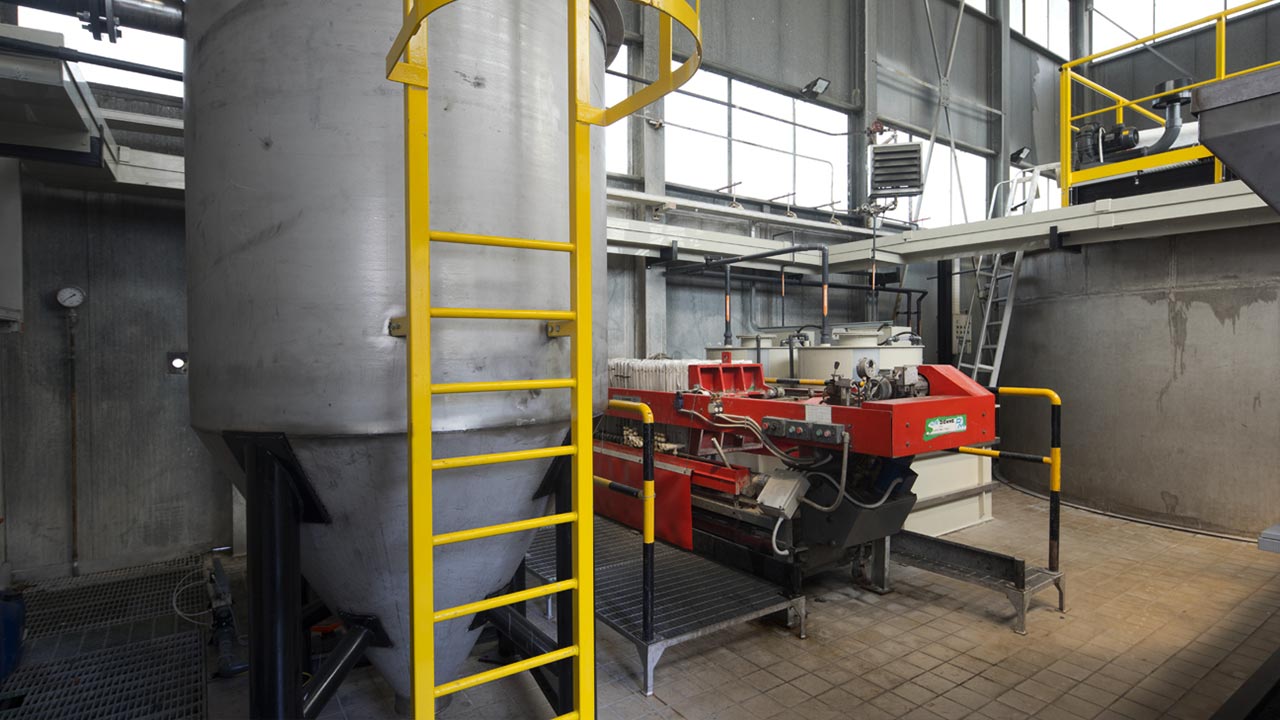
Mud Treatment
An enterprise's production cycle makes water used in processing laden with pollutants, which are separated from the liquid stream by the purification process.
These are found in the form of sludge, more or less concentrated, which requires final treatment and disposal.
This type of activity, which is required to reduce moisture and thus sludge volumes, is appropriate for contracting wastewater disposal costs and the related environmental impact, in the phase before it is taken over by companies entrusted with its management.

The steps of the process
The treatment of surplus sludge is given by different stages:
- Step 1: Flocculation (formation of sludge flakes)
- Stage 2: Stabilization or mineralization
- Step 3: Thickening
- Step 4: Dehydration in belt press, filter press or centrifuge
Secondary overflow sludge (i.e., produced in the biological phase) is taken discontinuously from the circuit and sent to the mineralization or stabilization tank.
This step is extremely important because the sludge of biological origin consists of a high organic matrix (caused by the bacteria used to degrade the organic material in the biological oxidation tank).
The residence time for sludge stabilization is about 1 week.
Next, the sludge is taken and sent to thickening, where it thickens to about 2 percent dryness (polyelectrolyte or bentonite can be dosed if this percentage is to be increased).
The thickened sludge is finally sent to the dewatering system where it is thickened to about 40-45% dry.
This part of the process, which takes place through filter presses, transforms the sludge into a soil-like waste material with peculiarities suitable for landfilling oreventual use in agriculture.
The treatment is carried out according to a mechanical procedure, operated by rollers, plates, or a double-drum centrifuge to filter the sludge and remove the water content.
Sludge treatment from chemical-physical plant
Water treated in a physical-chemical plant is rich in sludge flocs that must be separated from the clarified stream.
Therefore, the flow is sent (usually by gravity) to a lamellar decanter. The clear will flow out of the upper section while the sludge will thicken (at a rate of about 1%) in the conical section of the decanter.
The sludge will be drawn through an extraction pump and will be sent to a warehouse; a cylindrical-conical shaped vessel, in which the sludge will thicken more at 4%.
The thickened sludge will then be sent to a filter press; a piece of equipment consisting of a series of plates alternating with plies. As the fluid passes through it, the solid material, which is trapped in it, is separated from the remaining fluid.
Normative references
Legislative Decree No. 152/2006, also known as the Environmental Code, in Part V regulates theuse of sludge, appropriately treated, in the ecology sector and in composting plants.
With regard toagriculture, Legislative Decree No. 99/1992, in line with EU Directive 86/278/EEC sets out the parameters to be met with reference to the characteristics of sludge, including any heavy metals.

